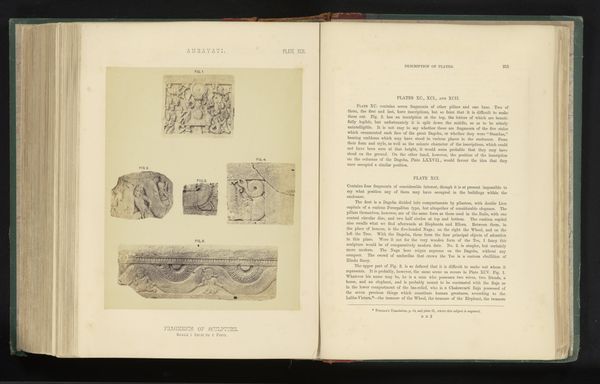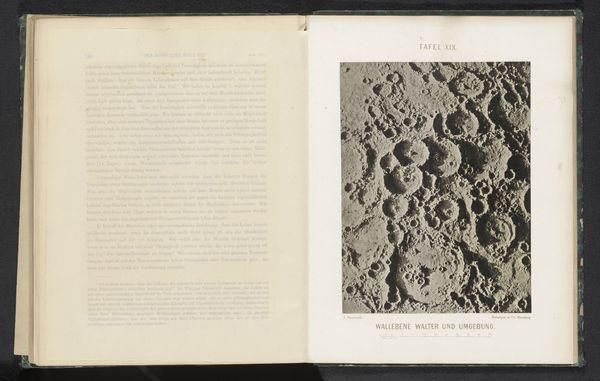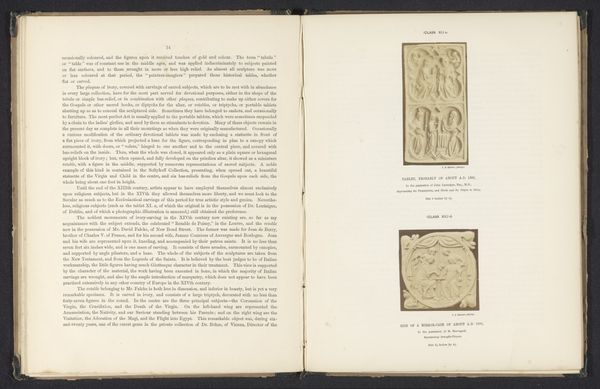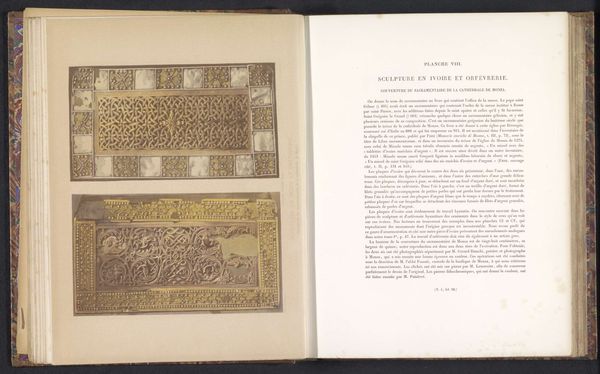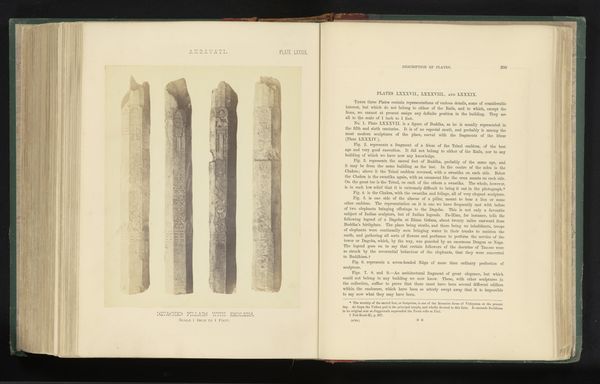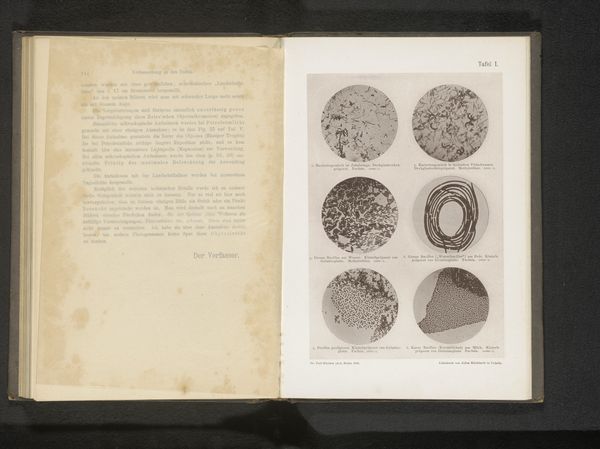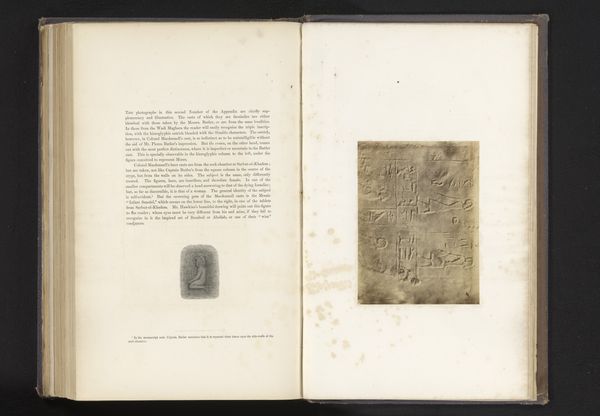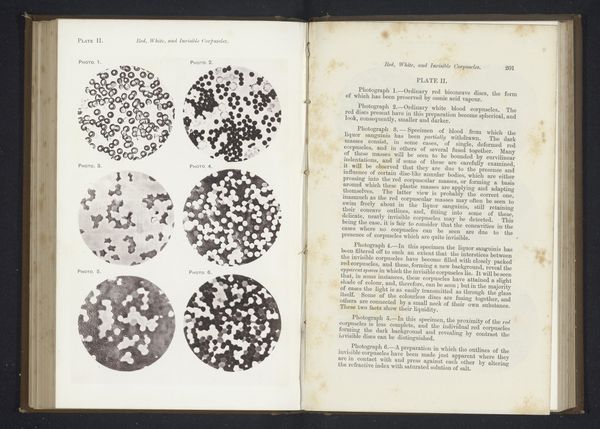
print, relief, photography, engraving
#
aged paper
#
script typography
# print
#
asian-art
#
relief
#
old engraving style
#
hand drawn type
#
photography
#
personal sketchbook
#
hand-drawn typeface
#
ancient-mediterranean
#
thick font
#
handwritten font
#
golden font
#
engraving
#
historical font
Dimensions: height 269 mm, width 142 mm
Copyright: Rijks Museum: Open Domain
These photographic reproductions depict two relief discs by William H. Griggs. The original material is stone, a medium associated with permanence, solidity, and significant manual labor. The discs themselves are densely populated with figures, suggesting narrative scenes. Griggs meticulously carved each detail, from the folds of garments to the expressions on faces. This laborious process imbues the artwork with a sense of time and dedication, highlighting the artist's skill and the effort required to transform raw material into complex forms. While we’re only seeing these in a photographic reproduction, consider the social context: stone carving has historically been associated with monumental architecture, religious artifacts, and elite patronage. This would place the artwork within a broader tradition of skilled craftsmanship and artistic production, reflecting the cultural values and economic systems of the time. Paying attention to the materials, making, and context allows a deeper appreciation of the artwork's meaning and significance, challenging traditional distinctions between fine art and craft.
Comments
No comments
Be the first to comment and join the conversation on the ultimate creative platform.
